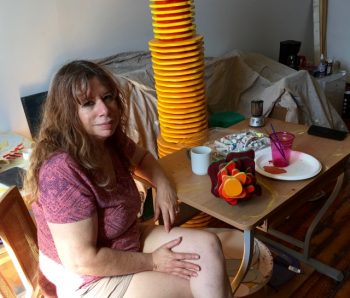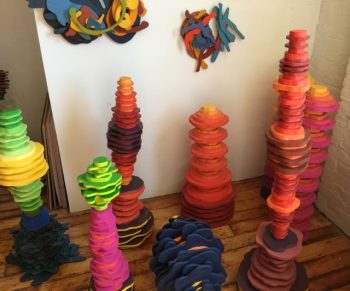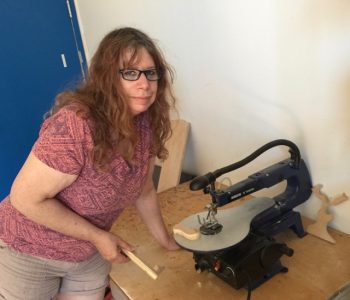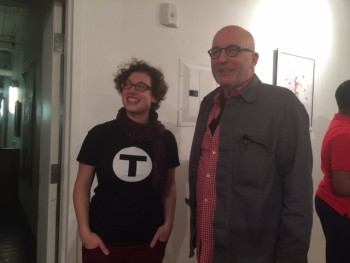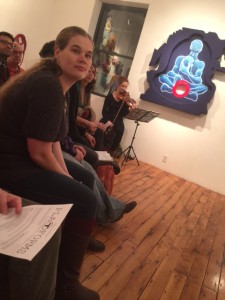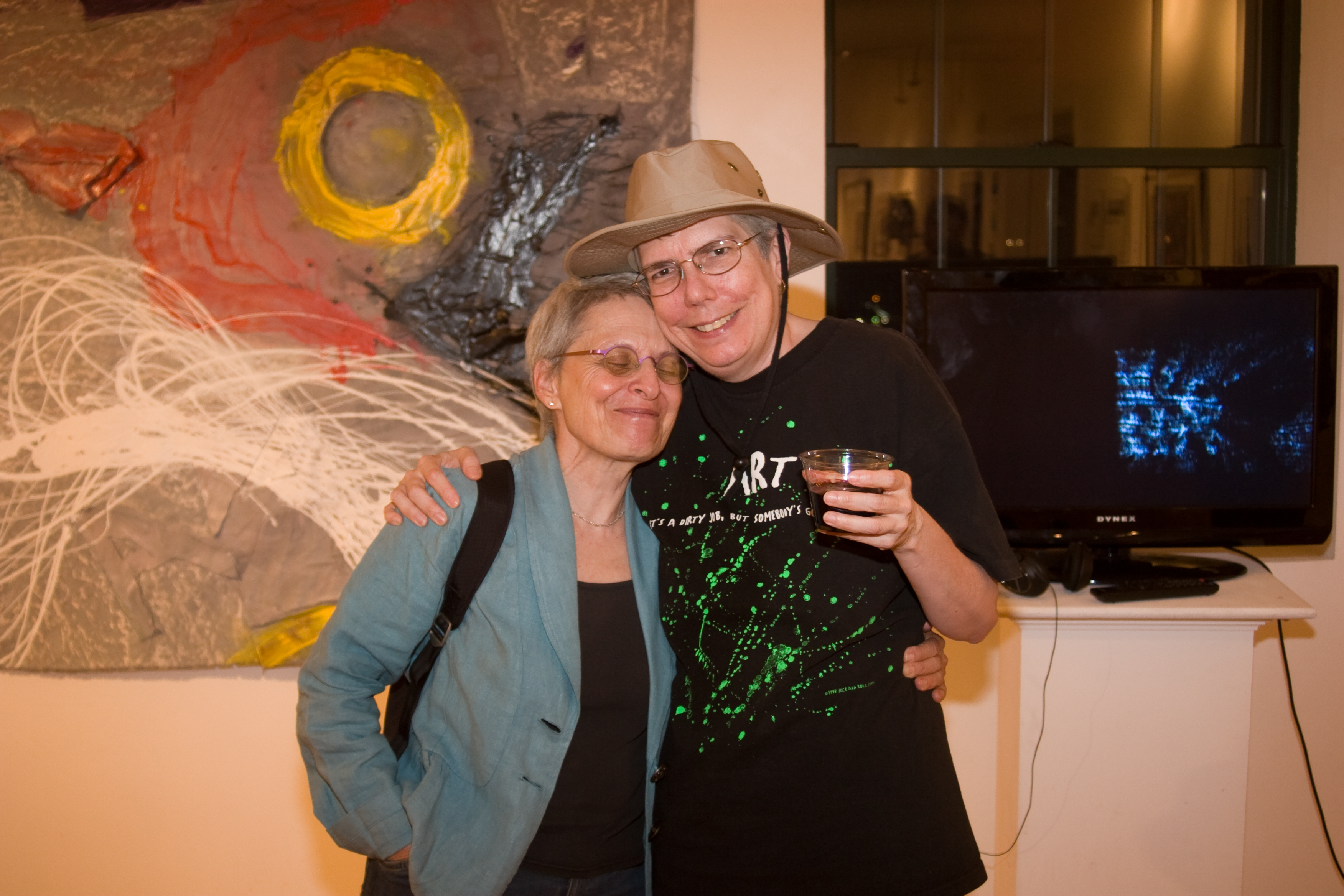
Samantha Marder in dressing room. BENT 2016
Meret Oppenheim is supposed to have described her famous Objet (Le Déjeuner en Fourrure-1936 ), the fur-covered cup, saucer and spoon, as “the image of femininity imprinted in the minds of men and projected on to women.”
Samantha Marder’s BENT installation at Boston’s Atlantic Works Gallery (December 3-30, 2016), begs similar questions as the cup: the social reality construct of femininity meets the reality of both being female, and/or dressing up like one. While the act itself–when we consider cross dressing to be an artistic act that makes its way to a gallery–questions who exactly is the man dressing up for? Perhaps the best answer is: himself, the person who in the moment is both male and female, the male projecting his dream on himself as a woman.
In turn, the witnessing of the documentation of man dressing up for himself and the accruements he uses to do it makes us, the viewer, a bit uncomfortable in the same way the idea of drinking tea from Oppenheim’s cup does. It’s a visceral “wait a minute!” reaction that is accompanied by a politically correct liberal voice that says, “It’s all right.”
But we all are programmed to react: real men don’t spend hours looking into mirrors; real women don’t really dress up like the man who is play acting a slut, a bride, a maid wearing crotchless underwear, or a mean horny nurse.
In our polarized culture, men are not to be treated as mere body, and women must consider themselves primarily body. The portrayed body becomes the feminized body, regardless of its sex.
Marder shows, in her installation, that femininity has image; masculinity has no image.
The two rooms in the gallery are set up like this: One room is Reality. The second room is Dreamland.The middle divider is a dark curtain, like the subconscious, that the gallery goer and the cross dresser passes through when entering the rabbit hole.

Reality room. BENT, 2016.
The reality room showcases a row of snapshots of men wearing wigs, women’s clothing and make-up.They look like they’re all having a blast: laughing, showing cleavage, revealing the thigh line of black stockings.
In the same room, on the opposite wall, is Marder’s journal, a sociological observation of
degrees of sexual, sexy and social behaviors; a list of the fantasies men prefer to act out after they’ve dressed up as women (job interviews, caught in the act of sexual betrayal, automat slut).
Once you pass through the black curtain, to the dreamland side of her installation, Marder shows you the nuts and bolts of the business of cross dressing all bathed in soft pink lights. There’s a lounge area to relax, listen to music, a basket of soft buttered buns. In one corner is a softly lighted bridal gown ( “Hindu men’s favorite fantasy,” she pointed out.) In front of the leather sofa and floor cushions is a glass topped coffee table filled with an assemblage of breast protheses.
To the far right in the dreamland area, is a small closet of a room lined floor-to ceiling with mirrors. It has a shag rug and a chandelier composed of pink fluffy petticoats. In this room gallery goers can try on one of a handful of wigs and/or high heels, test dozens of tubes of lipstick, touch feathers. Girl heaven.
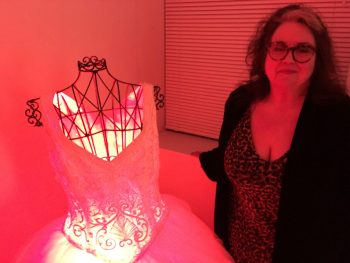
Samantha Marder with Bridal Gown. BENT, 2016
Marder, who in addition to being an artist-exhibitor at Atlantic Works Gallery, has worked as a cross dresser facilitator for the past 20 years. She has a degree in cultural anthropology and previously worked as a social worker.
Her show BENT is an intellectually eroticized exhibit that agrees reality is a construct; that plays with philosophical ideas about reality and gender; that acknowledges real men can’t dress up as women and hang out at their country club or attend their business’s board meetings.
“Usually men who want the experience of dressing up as a woman have to go to a dominatrix or prostitute. I am neither.” She finds clients through ads in magazines, such as Boston Magazine.
Marder has a collection of over 200 miniskirts in her studio and perhaps twice as many panties. “Certain men reduce anxiety and stress by cross dressing, ” Marder said. “I am their fairy godmother, their facilitator, their guide.”
BENT is Marder’s second gender exploring installation at Atlantic Works Gallery.
BTW: in the 30s Meret Oppenheim sold her fur lined cup to the MoMA in New York for $50. Since this was the first work by a woman the museum acquired, Oppenheim is playfully called the First Lady of MoMA.
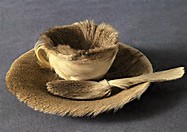
Object (or Luncheon in Fur), by Meret Oppenheim. In 1936, Oppenheim wrapped a teacup, saucer and spoon in fur. In the age of Freud, a gastro-sexual interpretation was inescapable. Even today, the work triggers intense reactions.

